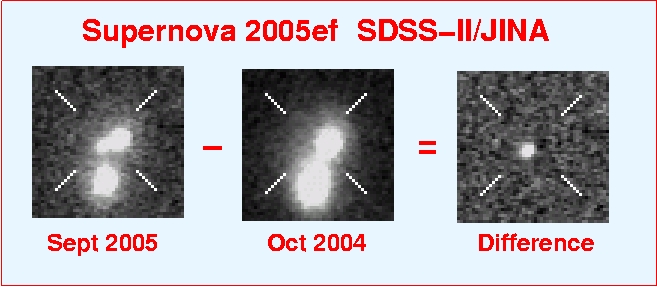SDSS-II Breaking News
September 21, 2005
The extension of the Sloan Digital Sky Survey (SDSS-II) announced in an International Astronomical Union Circular the discovery of five supernovae on September 19. This is the start of a multi-year program that will discover several hundred supernovae and use them to estimate properties of dark matter and dark energy. The Joint Institute for Nuclear Astrophysics (JINA) based at the University of Notre Dame is partner in the SDSS-II effort.
The SDSS telescope in New Mexico with a mirror diameter of 2.5 meters is used for the supernova search. It scans the same strip of sky every other night and the scans are compared with images taken in 2004. After image processing the difference between the recent scans and old scans reveals any variable or moving sources. Many of these are asteroids and active galactic nuclii, but a handfull are exploding stars in distant galaxies. After software filters out most of the false supernova candidates, the SDSS astronomers eye-ball the remaining images to pick out the good events. Spectra of many of the candidates are taken to determine the type of supernova and how much the light has been redshifted by the expanding universe.
An example of a SDSS supernova discovery:
SDSS-II at JINA
